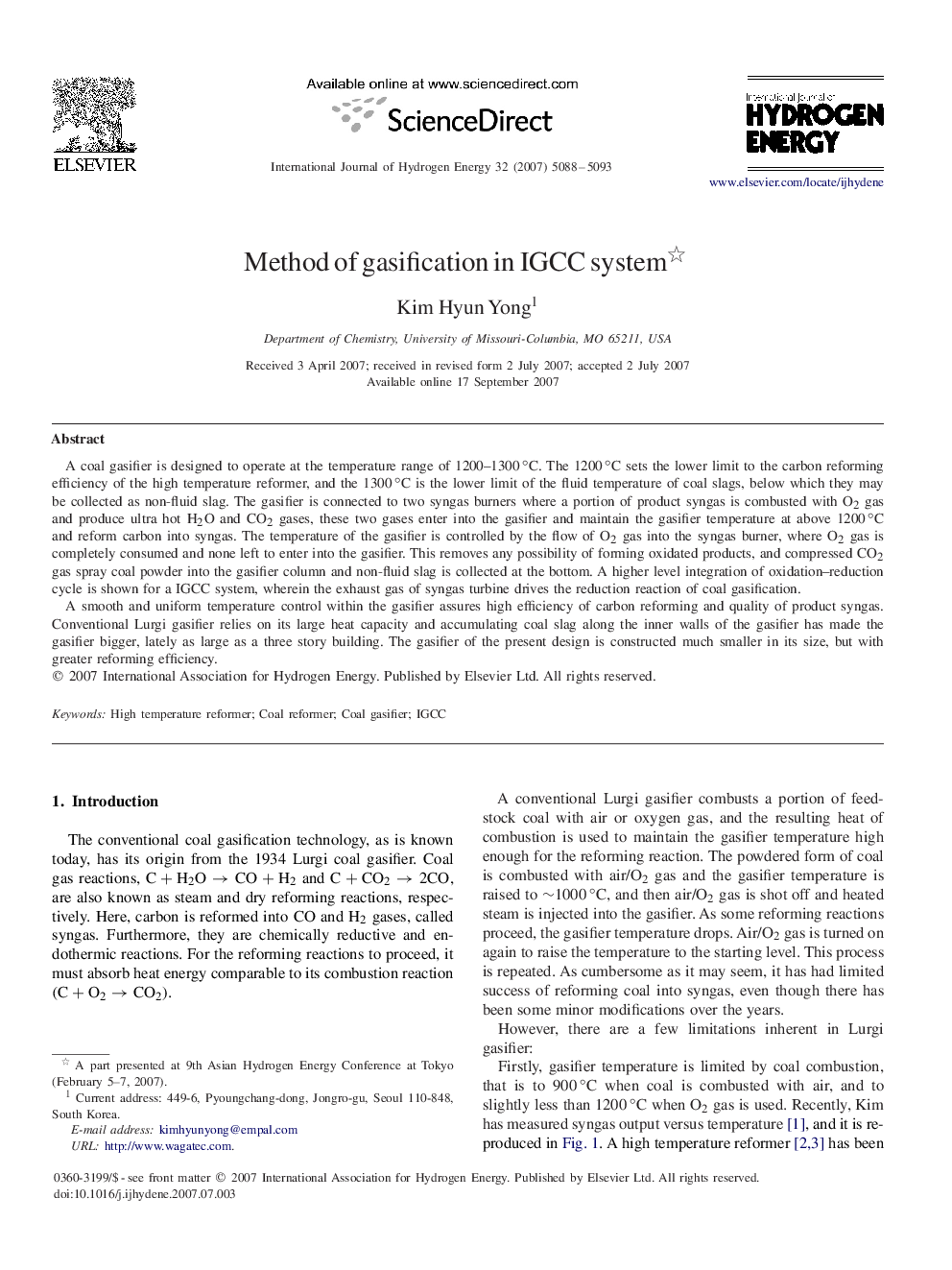| Article ID | Journal | Published Year | Pages | File Type |
|---|---|---|---|---|
| 1283804 | International Journal of Hydrogen Energy | 2007 | 6 Pages |
A coal gasifier is designed to operate at the temperature range of 1200–1300 °C. The 1200 °C sets the lower limit to the carbon reforming efficiency of the high temperature reformer, and the 1300 °C is the lower limit of the fluid temperature of coal slags, below which they may be collected as non-fluid slag. The gasifier is connected to two syngas burners where a portion of product syngas is combusted with O2 gas and produce ultra hot H2O and CO2 gases, these two gases enter into the gasifier and maintain the gasifier temperature at above 1200 °C and reform carbon into syngas. The temperature of the gasifier is controlled by the flow of O2 gas into the syngas burner, where O2 gas is completely consumed and none left to enter into the gasifier. This removes any possibility of forming oxidated products, and compressed CO2 gas spray coal powder into the gasifier column and non-fluid slag is collected at the bottom. A higher level integration of oxidation–reduction cycle is shown for a IGCC system, wherein the exhaust gas of syngas turbine drives the reduction reaction of coal gasification.A smooth and uniform temperature control within the gasifier assures high efficiency of carbon reforming and quality of product syngas. Conventional Lurgi gasifier relies on its large heat capacity and accumulating coal slag along the inner walls of the gasifier has made the gasifier bigger, lately as large as a three story building. The gasifier of the present design is constructed much smaller in its size, but with greater reforming efficiency.
